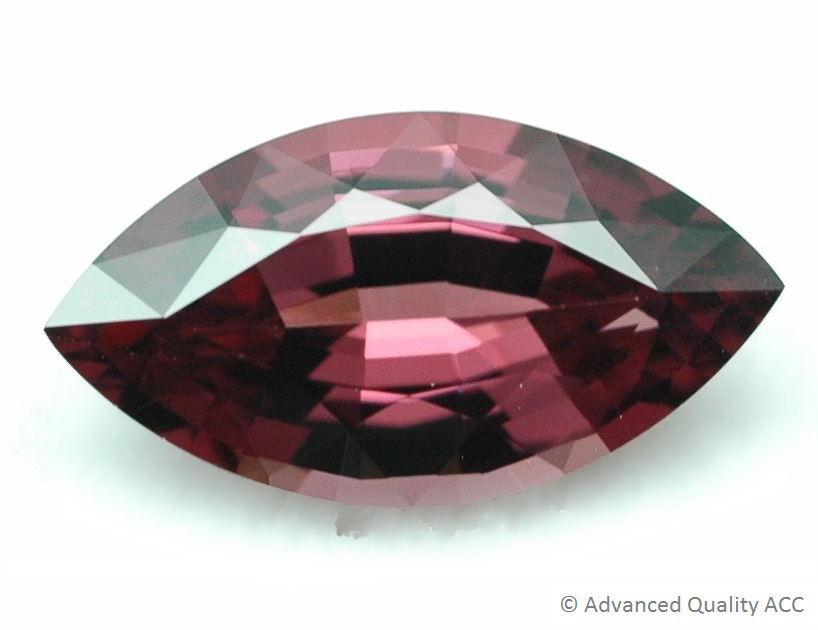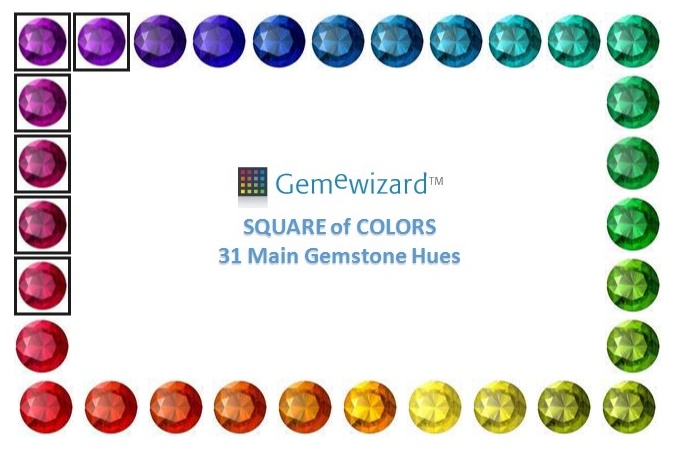RHODOLITE GARNET
Rhodolite is the purplish-red to reddish-purple variety of garnets, a result of the mixture of 2 garnet species. Garnets are nesosilicate minerals. They constitute an isomorphous series, that is, their crystal structure is basically the same (X3Y2(SiO3)4), but they differ in their chemical compositions. There are over 20 different garnet species, but only 6 of them are considered to be gem-worthy, some of which include a few varieties. These species are pyrope, almandine, spessartite, grossularite, andradite and uvarovite. Rhodolite is a magnesium- and iron-rich aluminum nesosilicate mineral ([Mg+Fe]3Al2(SiO3)4) and is the mixture of the Garnet species Pyrope and Almandine at a ratio of 2 to 1, respectively. It is generally far clearer than its red sisters and has properties common to both, but is considered superior to them. It is found in regions where pyrope and almandine are mined.
Rhodolite is thought to either come from the Greek words rhodon, meaning rose, and lithos, meaning stone; or from the flower rhododendron. Rhodolite was first discovered in North Carolina in Cowee Creek, Macon County.

LEGEND AND LORE
Red garnets were very common since ancient times and were mined in Europe of old, hence its name is thought to have come either from the Latin word granatum, meaning pomegranate, a token of the dark red color and shape of the seeds, or from the Middle English word gernet, meaning dark red.
Garnets in every variety are birthstones of the month of January. It is traditionally given on the 2nd and 6th wedding anniversaries.
Garnets have been around since ancient times. The Bible mentions garnets as one of the twelve gemstones in the breastplate of the high priest. Christians believed garnet symbolized the sacrifice of Christ. Muslims believed it illuminated the fourth heaven. The Greeks said it guarded children from drowning. Tribes from India used red garnets as pellets, believing that they would seek blood and inflict a deadlier wound upon enemies.
Rhodolite is known as the Stone of Inspiration, promoting love, kindness and compassion. It is believed to help with heart and lung disorders and to boost metabolism.


GARNET, RHODOLITE COLORS
Rhodolite colors range from violetish Purple (26) to slightly purplish Red (31), tending toward the purplish Red and pinkish Red colors. The common colors are dark deep reddish Purple to Red Purple.
GARNET, RHODOLITE SOURCES
Rhodolite is found in regions where pyrope and almandine are mined. It is found in Tanzania, Kenya, Madagascar, Mozambique, South Africa, Zimbabwe, Sri Lanka, Myanmar, China, Thailand, Brazil and USA.
PHYSICAL PROPERTIES
Variety: Rhodolite
Species/Series: Garnet, Pyrope and Almandine mixture
Chemical Composition: Magnesium iron aluminum Nesosilicate ([Mg+Fe]3Al2(SiO3)4)
Crystal System: Isometric (Cubic)
Color: violetish Purple to slightly purplish Red, common colors are dark deep reddish Purple to Red Purple
Hardness: 7.0 to 7.5
Refractive Index: 1.760 (+0.010/-0.020)
Specific Gravity: 3.84 (±0.10)
For information on other Garnet varieties, select Garnet in the Gem Type field.
Propertie: RI 1.76 HARDNESS 7-7.5 SPECIFIC GRAVITY 3.84 SPECIES-RHODOLITE OPTIC CHARACTER-SR PHENOMENA-NONE
Reactions: Ultrasonic: Usually safe Steamer: Never Heat: Fair-poor;temperature changes may cause fracturing Chemicals: Hydrofluoric acid
Major Sources: Sri Lanka, India, East Africa
Grading Information
Enhancement Code
Specific Gravity: 3.84








